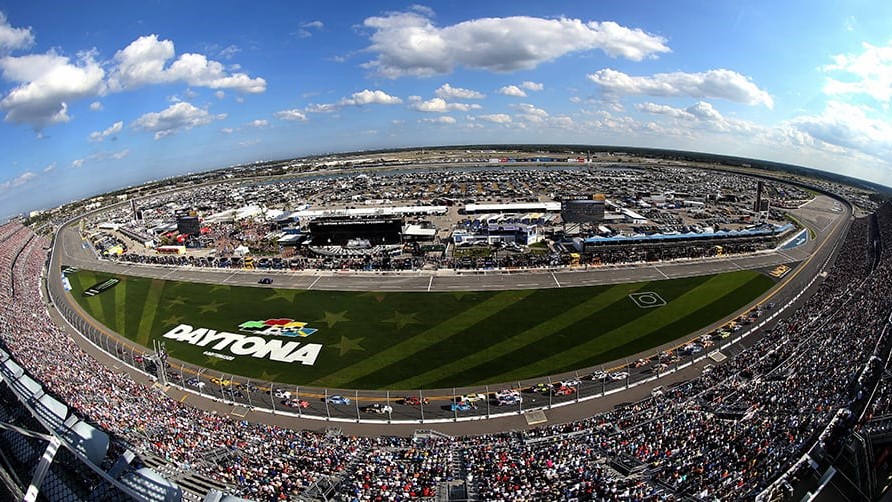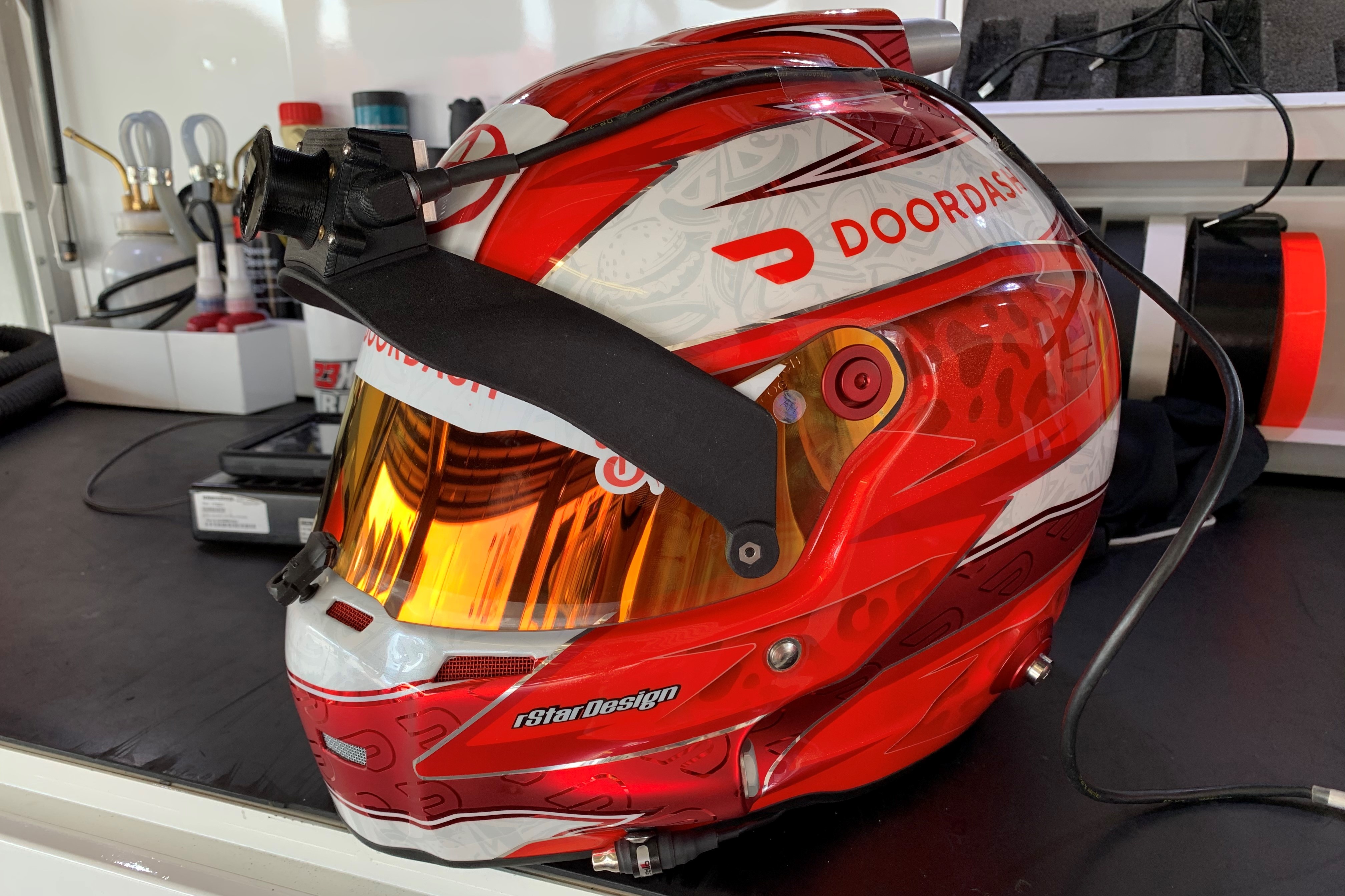Fox Sports Enhances Daytona 500 Coverage With Racing Drone, Extra Motion Tech
Created with EVS, Extra Motion interpolates between frames to create ‘synthetic slow motion’

DAYTONA BEACH, Fla.—The Daytona 500 is the Super Bowl of auto racing, and like the actual Super Bowl, the race serves as a showcase for several new or improved production technologies that enhance viewer enjoyment—this year in the form of shots from multiple in-car cameras enhanced with interpolated super slow motion and a high-speed drone capable of bursting to speeds of 100 mph, says Michael Davies, senior vice president, field operations at Fox Sports.
“Daytona, as it is every year, is the biggest race of the year. It’s also the first race of the year, and this is no different in COVID times. You know, Daytona, even in COVID times, is the Super Bowl of racing—after the Super Bowl of Super Bowls,” says Davies with a chuckle.
(The Fox telecast of the Daytona 500 starts Sunday, Feb. 14, at 2:30 p.m. EST. Live streaming coverage will be available via Fox Sports Go. Clint Bowyer, a former Cup Series driver, NASCAR Hall of Famer Jeff Gordon and play-by-play announcer Mike Joy will call the race.)
Fox Sports is deploying nearly 100 cameras, including a GoPro suspended from a racing drone and a Sony P1 from a heavy-lift drone, mirrorless DSLR-like Megalodon cameras from Sony and Canon and multiple in-car cameras per car, to heighten its coverage of the 63rd running of the race.
DRONES AND MEGALODON
Using drones to cover the race is nothing new for Fox Sports, but this year the broadcaster is expanding its airborne coverage, says Davies.
Fox Sports is turning for the second year in a row to Beverly Hills Aerials to capture footage from aloft. Last year, the company provided a racing platform it calls an “FPV,” or first person view drone, to capture dynamic shots of the race. This year, the company has taken its FPV drone to a new level, achieving sustained speeds of 70-80 mph and short spurts of 100 mph, says Beverly Hills Aerials chief pilot Michael Izquierdo.
“The FPV drone is able to accelerate to super-fast speeds and even track with the cars on caution laps when they’re going a little bit slower than 200 mph,” he says.
The professional video industry's #1 source for news, trends and product and tech information. Sign up below.
Beverly Hills Aerials’ custom-built heavy-lift drone carries a camera package that includes the P1 camera, batteries and microwave transmitter from Broadcast Sports International (BSI) weighing in at 25 pounds, says Izquierdo.
The drones may operate in a 100-foot-wide fly zone just off the track and away from the fans. “This keeps a nice buffer between us and all of the people on one side and the cars on the other side,” he explains. The only exception is when the drones are allowed to fly over the track at the very end of the race.
“Once the winner crosses the finish line and usually comes back to do donuts, we’re allowed to go on the track and get really close to the cars and the celebration,” he adds.
Fox Sports made a splash covering NFL end zone celebrations with its Megalodon camera system, and now it’s taking the rig to Daytona Beach for race coverage.
“What it is, is a somewhat inexpensive prosumer rig that involves Sony or Canon mirrorless cameras that look just like DSLRs,” says Davies. “We put it on some kind of stabilized rig, like a Ronin handheld, so they are super agile.”
For NASCAR race coverage, Fox Sports is attaching the camera system to a Red Rock Micro DigiBoom—a “sort-of high-end professional selfie stick,” says Davies. This configuration along with a wireless system gives the broadcaster a stabilized jib that it plans to use to capture shots that otherwise would be hard, if not impossible, to get.
“We’re hoping that we can get up to the pit boxes and maybe get over the wall and try to use that extra length [from the DigiBoom] on the camera to get some cool shots,” he says.
Davies, who says the name “Megalodon” is something Fox Sports invented because of inquiries from media and viewers, acknowledges this type of setup has been used for years but only gained notoriety because of a decision to outfit the rig with a wireless transmitter, making it possible to put live shots on air.
“We think we know what is going to make this thing shine and what's going to add to the broadcast, but until you really see it, you don't know. So it's really going to be fun to see what works in NASCAR,” he says.
IN-CAR AND EXTRA MOTION

Fox Sports is enhancing in-car race coverage in a couple of ways—with more shots and more frames. Cars are outfitted with four cameras—on the roof, rear bumper, driver’s helmet visor and a driver shot from one of three positions pointed at the driver’s face, says Andy Jeffers, owner of Sports & Entertainment Media, which works with Fox to secure in-car camera sponsorships. As of Feb. 9, the number of in-car cameras stood at 32.
The “more” aspect of the shot count will come from equipping three cars with RF systems that simultaneously transmit feeds from two cameras. “One camera is always on the faces of drivers so we can see what their reactions are,” says Davies, “and another feed from the same car can be used at the same time.”
When it comes to more frames from in-car cameras, Fox Sports will deploy an experimental technology it’s been working on with EVS called “Extra Motion,” a sort of frame rate converter technology that takes 59.94 frame video and interpolates between frames to create new synthetic frames. When played to air, they provide super slow motion replay, says Davies.
To make Extra Motion work, video from the in-car cameras will be sent to the AWS Cloud where the processing needed to interpolate between frames happens. The video, including interpolated frames, will then be sent back to Daytona for integration into the show.
While not exactly real-time, the couple of minutes needed for the roundtrip and processing will ensure the footage is relevant when taken to air. “In NASCAR, if there’s a crash or some kind of stoppage that often means you have a fair amount of time to go back and look at those angles,” says Davies.
Initial iterations of Extra Motion used for pylon-cams during NFL coverage have seen substantially improved turnaround times, says Davies, adding that tests with file footage from in-car cameras “looks incredible.”
COVID-19 WORKFLOW
What won’t be apparent to viewers Sunday is the continuing impact COVID-19 is having on remote production. However, for Fox Sports the broadcasters will be “picking up where we left off back in the spring” [of 2020] as it put in place policies and workflows to protect the production crew from the virus, says Davies.
“We very quickly got together a temporary facility in Los Angeles to do some of the replay and graphics in our old tape vault,” he says.
Since then that facility has been made permanent and another smaller production spoke in Pittsburgh has come online. Both will be used to augment production resources on site at Daytona and to reduce—if even in a limited way—the number of crew needed at the raceway.
“We are trying to limit the number of people in the truck by putting some of these things elsewhere,” he says. “Replay and graphics are going to be done on site, and they’ll also be done in L.A. and Pittsburgh.”
Replay and graphics operators working remotely from Los Angeles and Pittsburgh will take control of their respective EVS and graphics systems located in the production trucks at the track, viewing proxy video and controlling their systems via the internet, says Davies.
Other crew members, including craft video editors, radio editors and a live radio mixer, will simply work from home.
However, in some ways Fox Sports is boosting its presence on site compared to last year. “We'll be there in the booth [with talent] and in the pits as we have been in years past,” says Davies. “We're also going to have the producer and director in the truck. Previously, the producer was also in Charlotte.”
Fox Sports coverage of the Daytona 500 is the culmination of a week of race coverage that started Feb. 9 with the Busch Clash at Dayton. More broadly, it’s also the beginning of a new season that will see Fox covering some different tracks like the Circuit of The Americas (COTA) in Austin, Texas, and the Bristol Motor Speedway in Bristol, Tenn., says Davies.
“What we are looking forward to, to be quite honest, is an amazing season,” he says.
Phil Kurz is a contributing editor to TV Tech. He has written about TV and video technology for more than 30 years and served as editor of three leading industry magazines. He earned a Bachelor of Journalism and a Master’s Degree in Journalism from the University of Missouri-Columbia School of Journalism.


